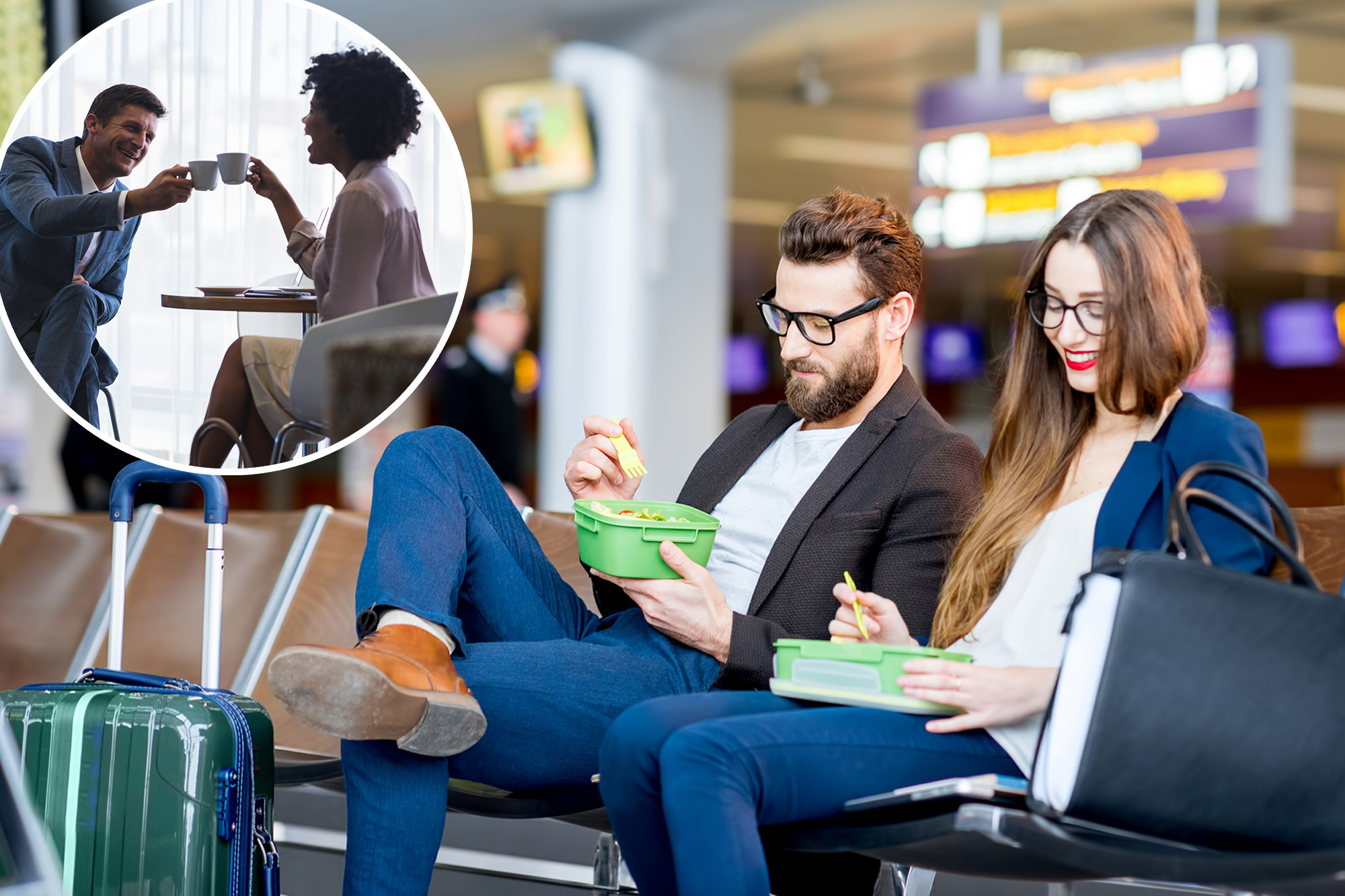
Things are looking for dining at the airport!
The days of a limited selection of redundant and underestimated food options have passed. In the appointment of its top 10 US airports for food and drink this month, Food & Wine noted that the tariff on removed land has been “moved from pragmatic to unwavering”.
With more choices than ever before, it is important to choose wisely.
The last thing you want to do is eat a mediocre meal and then crush yourself into a winged metal tube for several hours.
That is why the post had three NYC area food experts reveal the secrets to navigate healthy and certainly at the Food Court at the airport. These five types of foods and drinks just won’t fly.
alcohol
The whiskey is dangerous. Airlines have the right to reject passengers who are very mature at the airport. Say you do it on the plane – you want to pass the sick flight in a compact cozy?
And even small amounts of alcohol can lead to dehydration and increased urination.
“I do not recommend drinking alcohol before a flight, at least not too much,” told Stephanie Schiff, a dietitian nutritionist registered at the Northwell Huntington hospital.
“The air in the planes is very dry and can contribute to dehydration, which can deteriorate by drinking alcohol,” she added. “Dehydration can lead to headaches, fatigue and dizziness.”
Caffeine
Bad news, fans of creation. Caffeine is also a diuretic.
“While many passengers arrive at the airport deprived of sleep, taking caffeine is not without consequences,” said Sharon Puello, a registered and nutritious dietitian at NYC Health + Hospitals/Jacobi.
“Not only can it send you to the bathroom more often, depending on the individual, but it can also result in return drowsiness, affecting one’s energy levels after sitting down and barely cusiness to enjoy their attitude.”
That is why Schiff chooses for Decaf – with restrictions.
It only buys coffee from the main retail chains, where it is safe in food safety practices.
“I have herbies or servers put milk in my coffee behind the counter,” Schiff said. “I don’t use milk or cream in open -open containers – they may have been sitting there for a while.”
Fountain
“Added risk for bacterial ingestion if the beverage distributor is not properly cleaned, plus added sugar, not worth the instant satisfaction,” Puello said.
Schiff stressed that sodas and other carbonated drinks can also cause bloating, adding discomfort while traveling.
Both prefer bottled drinks – icy tea or juice for vitamins – because they are packaged in sanitary vessels, closed.
legume
If you cannot stomach the pressure, Schiff also recommends avoiding beans and crossing vegetables such as broccoli and cauliflower.
“These foods can cause bloating, which can be worse when flying due to changes in air pressure,” she said. “You don’t want to deal with it on a plane, so avoid those bean burritos.”
Packaged and self-service food
Many airport retailers sell pre-recovered salads and finishes.
This is a non-movement for Schiff.
“Although I love salads and cut fruits when I’m home, I don’t buy them at airports,” she explained. “I don’t know if they are properly washed or treated, and you can contract diseases such as E.Coli or Norovirus.”
Also on its list without flights: airport buffets because hot foods are often not hot enough to kill bacteria. As for the sushi, “I wouldn’t prefer not to beat it.”
Bacteria grow faster between 40 degrees Fahrenheit and 140 degrees Fahrenheit, a string known as “risk zone”.
Samantha Dieras, a registered dietitian and director of outpatient food services at Mount Sinai Hospital, suggests to request expiration dates in pre-recovered foods to ensure that you are inside the window.
The breaking foods should be consumed within two hours of leaving the secure temperature area, Dieras reported.
“After that time limit, the bacteria can grow,” she said. “For example, if you buy a yogurt, eat it within two hours. If you are planning to book a six-hour flight and wait until 4 o’clock, you are risking to develop a food-born disease.”
What to consume at airports
Water is a must. Schiff notes that you can bring an empty water bottle and fill it inside the airport after you have passed safety.
Puello suggests holding parts with a single service of your favorite electrolyte powder to add airport water.
Wise, Puello prefers stable shelves like Rx and type rods, chocolate -covered nuts, strong trail and cheeses like cedar, provolon and Swiss packaged with crackers or nuts.
“Each of these options is satisfactory and it is unlikely to let you feel sick or rushed to the bathroom,” she said.
If this does not sound delicious, you can always bring solid food like sandwiches and snack through safety.
“That way you have to eat what you want, you know it’s safe and you don’t have to deal with high airport prices,” Schiff said.
#foods #drinks #avoid #detected #airport
Image Source : nypost.com